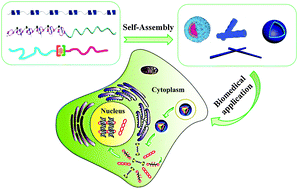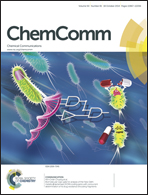Self-assembly of supramolecularly engineered polymers and their biomedical applications
Abstract
Noncovalent interactions provide a flexible method of engineering various chemical entities with tailored properties. Specific noncovalent interactions between functionalized small molecules, macromolecules or both of them bearing complementary binding sites can be used to engineer supramolecular complexes that display unique structure and properties of polymers, which can be defined as supramolecularly engineered polymers. Due to their dynamic tunable structures and interesting physical/chemical properties, supramolecularly engineered polymers have recently received more and more attention from both academia and industry. In this feature article, we summarize the recent progress in the self-assembly of supramolecularly engineered polymers as well as their biomedical applications. In view of different molecular building units, the supramolecularly engineered polymers can be classified into the following three major types: supramolecularly engineered polymers built by small molecules, supramolecularly engineered polymers built by small molecules and macromolecules, and supramolecularly engineered polymers built by macromolecules, which possess distinct morphologies, definite architectures and specific functions. Owing to the reversible nature of the noncovalent interactions, the supramolecularly engineered polymers have exhibited unique features or advantages in molecular self-assembly, for example, facile preparation and functionalization, controllable morphologies and structures, dynamic self-assembly processes, adjustable performance, and so on. Furthermore, the self-assembled supramolecular structures hold great potential as promising candidates in various biomedical fields, including bioimaging, drug delivery, gene transfection, protein delivery, regenerative medicine and tissue engineering. Such developments in the self-assembly of supramolecularly engineered polymers and their biomedical applications greatly promote the interdiscipline research among supramolecular chemistry, polymer materials, biomedicine, nano-science and technology.

- This article is part of the themed collection: Polymer Self-Assembly

 Please wait while we load your content...
Please wait while we load your content...